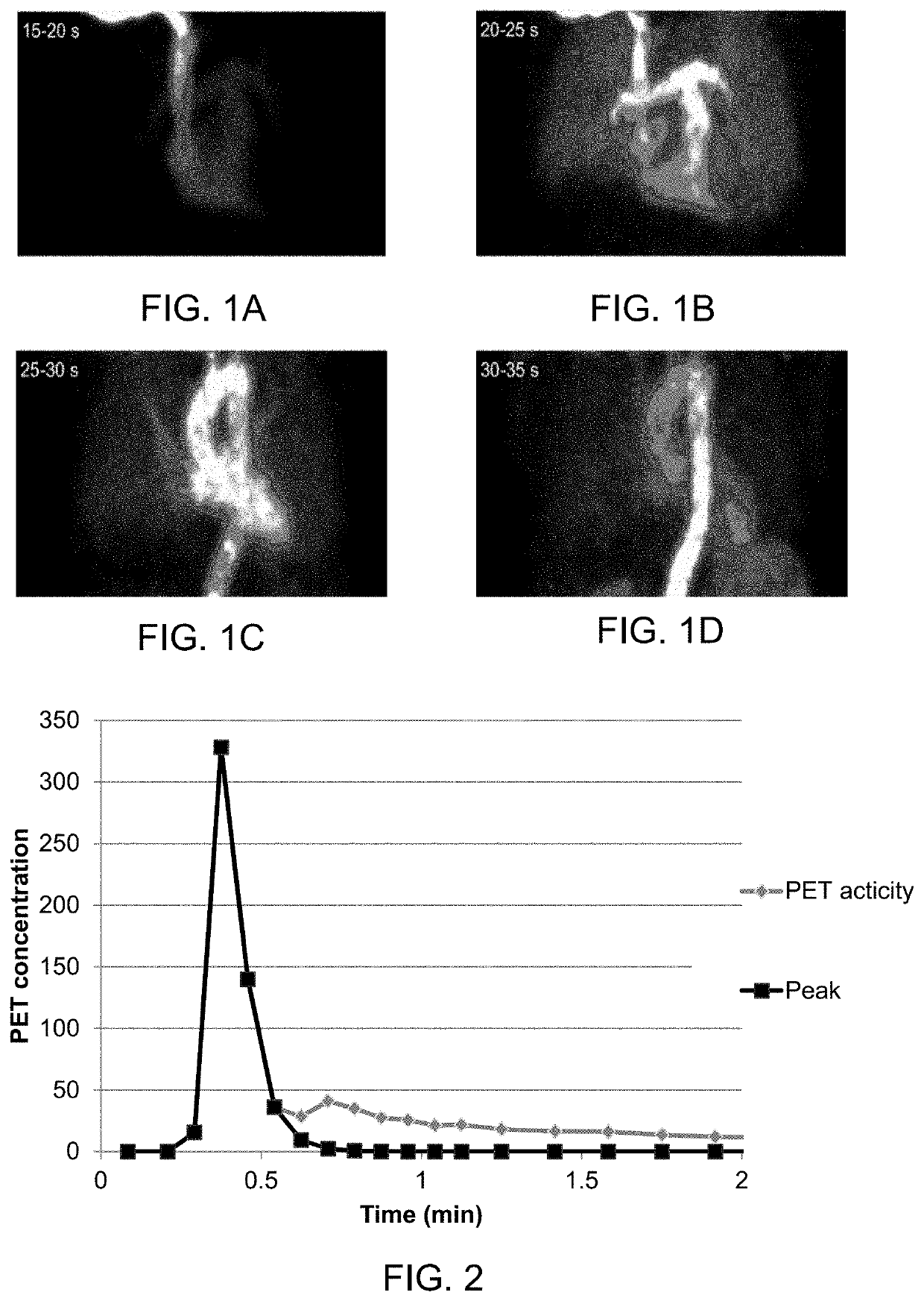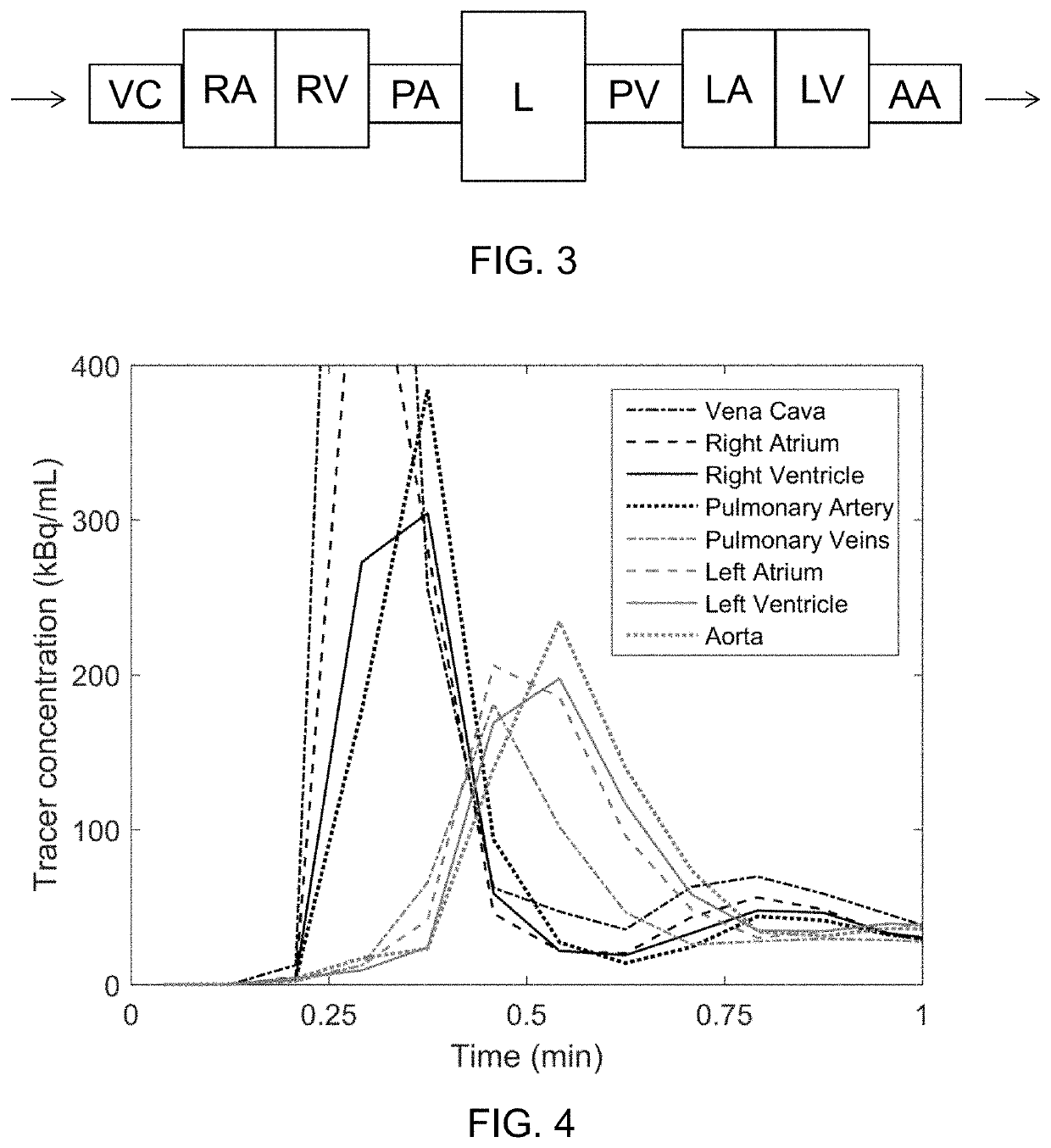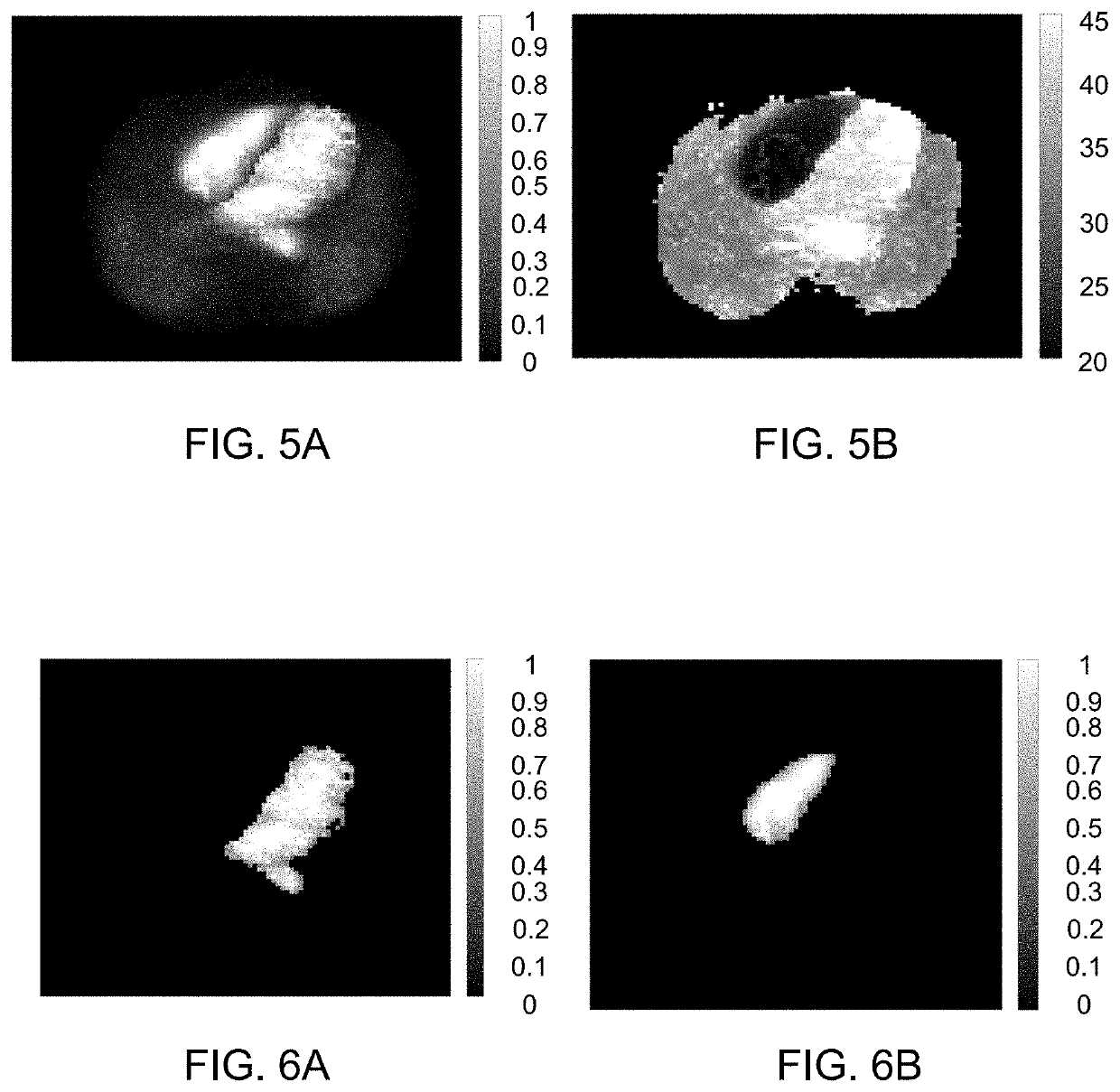Method and system for modelling a human heart and atria
a heart and atria technology, applied in the field of human heart and atria modelling, can solve the problems of not being able to routinely use 3d techniques, and not being able to accurately model the heart and atria. the effect of convenien
- Summary
- Abstract
- Description
- Claims
- Application Information
AI Technical Summary
Benefits of technology
Problems solved by technology
Method used
Image
Examples
Embodiment Construction
[0082]The present disclosure relates as mentioned in general to a method for modelling a human heart and / or chambers and cavities therein, such as the left and right atrium, or a human central circulation comprising a human heart, based on PET images. By segmenting the various chambers and large vessels in the central circulation, a segmented model is obtained, from which further parameters and information can be obtained.
[0083]Other imaging technologies such as CT, MRI and scintigraphy using gamma-cameras can also be used.
[0084]The present disclosure in particular relates to the inventors' finding that, inter aiia, the left atrium (LA) can be segmented automatically using images of bolus area-under-curve and midpoint time. Using the midpoint time of the left-ventricular (LV) cavity as reference, the LA can be segmented as regions with high first-pass activity and a midpoint time shorter than that of the LV. In analogous fashion, the right atrium (RA) can be segmented, and for both ...
PUM
 Login to View More
Login to View More Abstract
Description
Claims
Application Information
 Login to View More
Login to View More - R&D
- Intellectual Property
- Life Sciences
- Materials
- Tech Scout
- Unparalleled Data Quality
- Higher Quality Content
- 60% Fewer Hallucinations
Browse by: Latest US Patents, China's latest patents, Technical Efficacy Thesaurus, Application Domain, Technology Topic, Popular Technical Reports.
© 2025 PatSnap. All rights reserved.Legal|Privacy policy|Modern Slavery Act Transparency Statement|Sitemap|About US| Contact US: help@patsnap.com



